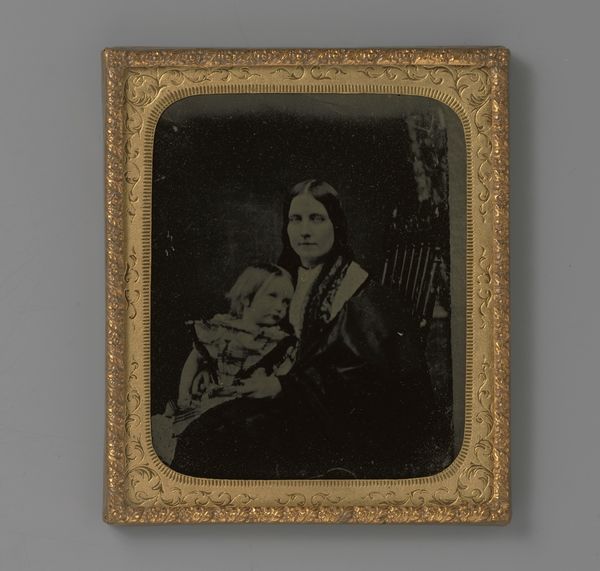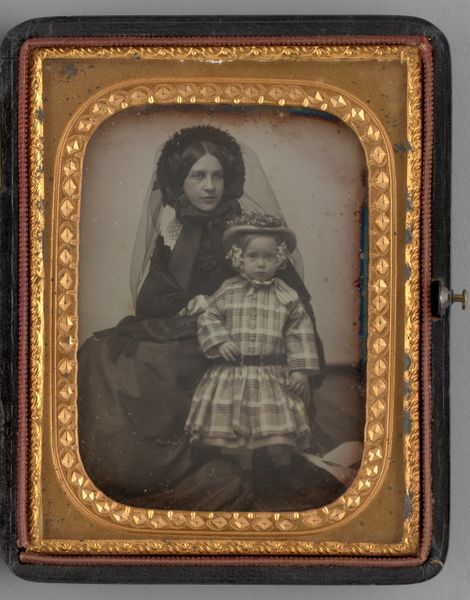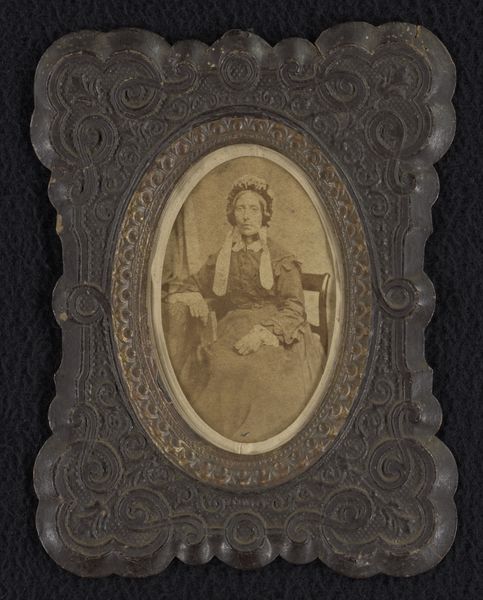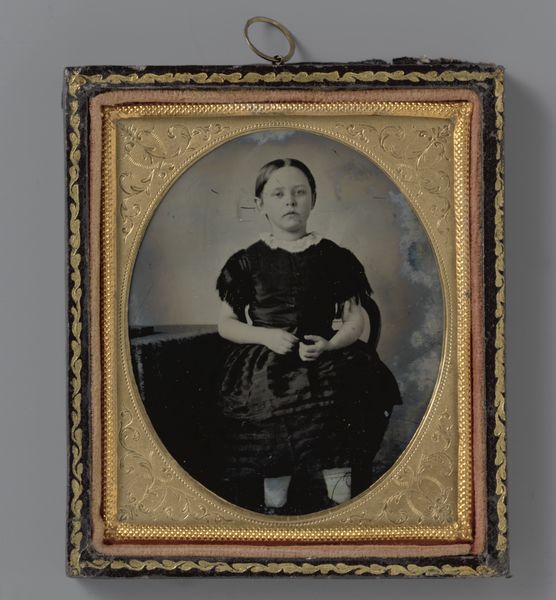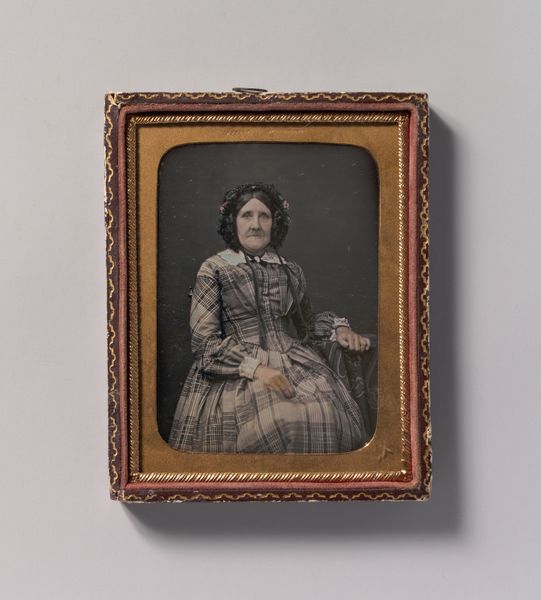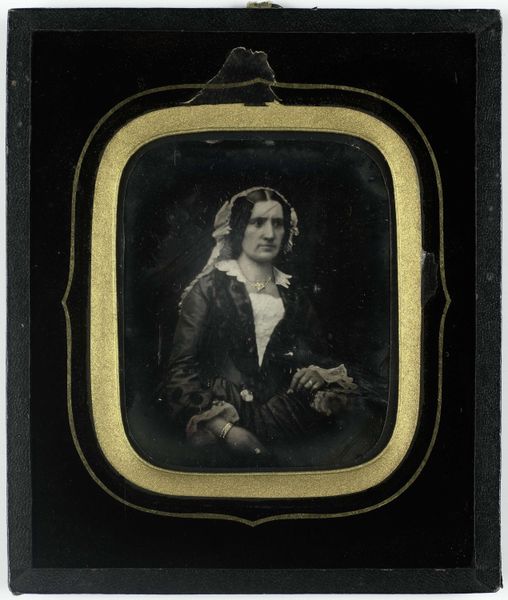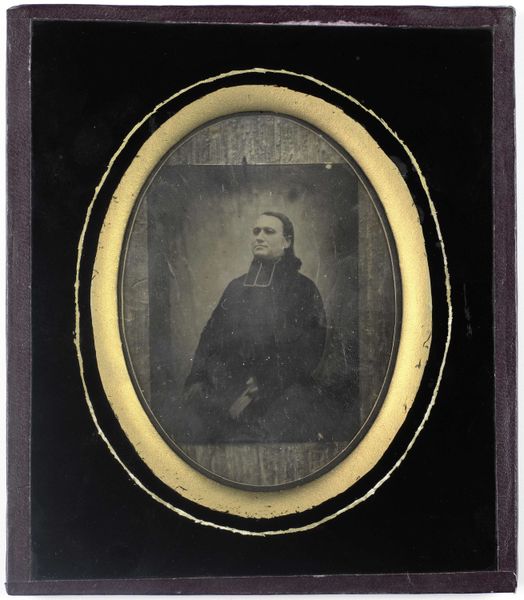
daguerreotype, photography
#
portrait
#
daguerreotype
#
photography
#
genre-painting
#
realism
Dimensions: height 76 mm, width 63 mm, height 116 mm, width 104 mm
Copyright: Rijks Museum: Open Domain
Curator: This is a daguerreotype from around 1855 to 1870, titled "Portrait of an Unknown Woman with Child in her Lap." Editor: There's a beautiful somberness to this portrait. The muted tones and the subjects' serious expressions create a sense of gravity, like witnessing a very private moment of reflection. Curator: Exactly. Daguerreotypes, early forms of photography, often possess this kind of gravitas due to long exposure times. Sitters had to remain still for extended periods. Considering photography’s burgeoning democratization of portraiture, especially for the middle class, this daguerreotype stands as an interesting example. Editor: It's striking to think about the material conditions influencing artistic styles. Looking at her clothes and her hairstyle it is a typical Biedermeier look. It also shows a level of formality that underlines her respectability. The fact that she took the effort of taking her picture, she wanted to show off something and leave a legacy, something immortal. The act of choosing what to wear speaks volumes. This photograph provides access to a lost life and identity. Curator: That legacy element is important. As a new technology, it presented both exciting possibilities and challenges to prevailing concepts of representation. These portraits served not only as personal mementos but also as declarations of selfhood and social position in a rapidly evolving society. The gaze of the mother, looking directly to the viewer, creates that special bond. It’s not just a material legacy, but an emotional one. Editor: Right, and thinking about women and representation, how often were their stories actively suppressed, and access denied? This photograph becomes incredibly important; as proof of presence, her identity can’t be fully erased because here is an indelible trace of their existence. Curator: Ultimately, what starts as an art-historical inquiry leads us down a road of societal impact. This portrait, despite its subject remaining anonymous, speaks volumes about the power of images to reflect and shape cultural identities during transformative times. Editor: A perfect example of how a single image can unveil the complexities of gender, class, and memory and show us what really matters. It inspires us to question our own place in that wider history of being seen, being forgotten, being remembered.
Comments
No comments
Be the first to comment and join the conversation on the ultimate creative platform.


